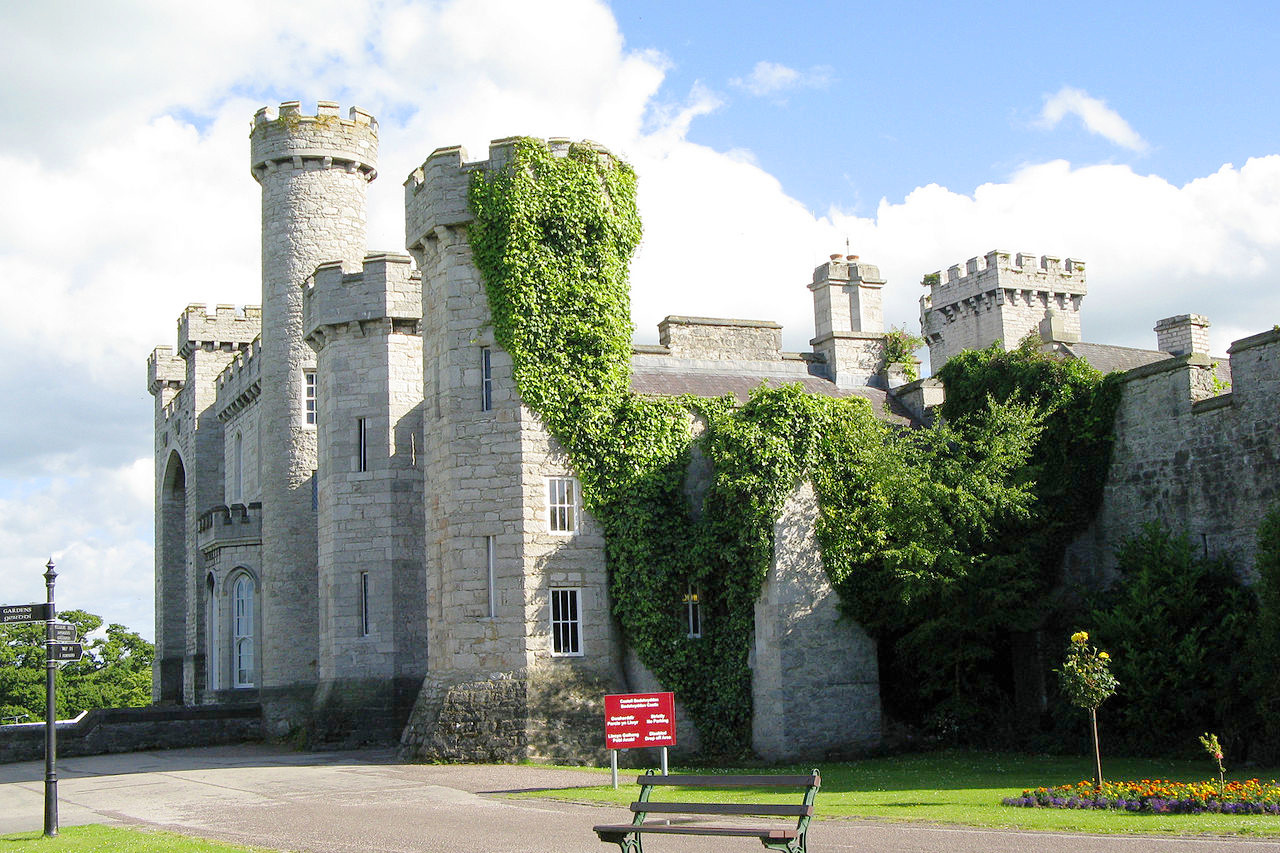The Geography of
Wales
Why visit Wales?
The landscapes of Wales are stunning, with mountains, valleys, and rivers. The Welsh landscape ranges from Snowdonia, which offers mountain views which go on for over 100 miles, to Cardigan Bay with its dramatic cliffs that are perfect for rock climbing or cliff diving, through valleys rich in coal and iron deposits, to rural areas characterised by rolling hills dotted with villages. There are also a lot of hidden treasures in Wales, the architecture is so beautiful with all the stone buildings.
Contents
Map
 Relief map of Wales
Relief map of Wales
What is the landscape of Wales like?
Wales, though long united to England, still retains its own national character. It can be divided into North and South Wales, each with its special charm. The scenery is richly varied. Rivers and torrents, almost without number, roll through its mountain valleys, whose cultivated banks, adorned with trees, contrast with the lofty summits which tower above them. In some cases these rivers force their way through deep rocky recesses, the sides of which rise sharply to a great height, while occasionally, a bridge thrown across from one to the other, over a deep roaring torrent, produces terrific scenes.
North Wales has the highest mountains, and the deepest and narrowest valleys. The most famous of the Welsh highland areas is Snowdonia National Park in the northwest of the country. The highest peaks are in Snowdonia which is famous for its steep mountain ranges and its mountain climbing; Snowdon or Yr Wyddfa at 1,085 m (3,560 feet) being the highest mountain in Wales. The mountains of North Wales have been heavily glaciated—the hills are rounded, the rocks polished, and there are deep, steep-sided valleys, cirques, mountain tarns, and waterfalls.
Although the north is the most mountainous area, there are also delightful upland areas of Central Wales. In South Wales the valleys are broader, more fertile and contain more towns and villages; they often expand into wide plains, encircled by a mountain boundary. The highest hills are in the Brecon Beacons, which are steep on the north and dropping more gently southwards to the coastal plains.
Wales has at least a hundred old castles and a wild, unspoiled beauty. Caernarvon Castle in the northwest is where the first Prince of Wales was presented by his father Edward I. The castle is forbidding and majestic. South of Caernarvon is ghostly Harlech Castle. In the southwest you come to Pembrokeshire with its many Norman castles. This is the oldest county in South Wales and full of historic interest. The stones at Stonehenge are believed to have come from here.
 Vale of Llangollen, Denbighshire
Vale of Llangollen, Denbighshire
What is the nature of Wales like?
The scenery of Wales contains innumerable mountain streams, rivers, waterfalls, lakes, and peaks. Compared with those in the English and Scottish highlands, the woods of Wales are in many places surprisingly well preserved. North Wales in particular has beautiful scenery, with light deciduous woods covering the mountain slopes, and a very fertile ground vegetation extending right down to the edge of the swiftly flowing streams and the numerous waterfalls. After brief showers on hot summer days, these deciduous woods are almost subtropical in appearance; damp heat rises from the soil, myriad drops of water glisten in the sunshine, and a chorus of bird song rises from the trees.
What is the climate of Wales like?
See also our article: The Climate of the United Kingdom
Wales generally enjoys a temperate climate, warmed by the waters of the North Atlantic. The weather is generally cool to mild with frequent cloud and rain, but occasional settled spells of weather occur at all seasons. Rain is generally a little heavier than is the case for England, and can occur in any month.
| Climate data for Cardiff (1991–2010) | |||||||||||||
|---|---|---|---|---|---|---|---|---|---|---|---|---|---|
| Month | Jan | Feb | Mar | Apr | May | Jun | Jul | Aug | Sep | Oct | Nov | Dec | Year |
| Average high °C (°F) | 8.6 (47.5) | 9.2 (48.6) | 11.3 (52.3) | 14.4 (57.9) | 17.4 (63.3) | 20.1 (68.2) | 21.8 (71.2) | 21.4 (70.5) | 19.1 (66.4) | 15.3 (59.5) | 11.6 (52.9) | 9.1 (48.4) | 15.0 (59.0) |
| Daily mean °C (°F) | 5.6 (42.1) | 5.9 (42.6) | 7.6 (45.7) | 10.1 (50.2) | 13.0 (55.4) | 15.7 (60.3) | 17.5 (63.5) | 17.2 (63.0) | 14.9 (58.8) | 11.7 (53.1) | 8.3 (46.9) | 6.0 (42.8) | 11.1 (52.0) |
| Average low °C (°F) | 2.5 (36.5) | 2.5 (36.5) | 3.9 (39.0) | 5.7 (42.3) | 8.5 (47.3) | 11.1 (52.0) | 13.1 (55.6) | 12.9 (55.2) | 10.7 (51.3) | 8.0 (46.4) | 4.9 (40.8) | 2.8 (37.0) | 7.3 (45.1) |
| Average precipitation mm (inches) | 127.0 (5.00) | 93.0 (3.66) | 85.3 (3.36) | 72.1 (2.84) | 78.5 (3.09) | 73.5 (2.89) | 83.6 (3.29) | 104.8 (4.13) | 86.3 (3.40) | 129.1 (5.08) | 130.7 (5.15) | 139.6 (5.50) | 1,203.5 (47.39) |
| Source: Met Office | |||||||||||||
 Harlech Castle, Gwynedd
Harlech Castle, Gwynedd
The official websites
Wales

Home of the Celtic Dragon
| Location: | Western Britain |
| Coordinates: | 52° 30′ N, 3° 30′ W |
| Size: | • 230 km N-S; 180 km E-W • 140 miles N-S; 110 miles E-W |
| Terrain: | Hills everywhere rising to low mountains in the northwest |
| Climate: | Maritime climate with mild summers and cool winters; year-round rainfall |
| Highest point: | Snowdon / Yr Wyddfa 1,085 m / 3,560 ft |
| Forest: | 24% (2010 est.) (source) |
| Population: | 3,153,000 (2019) |
| Population density: | High (148/km²) |
| Capital: | Cardiff |
| Languages: | Welsh; English |
| Human Development Index: | Very High (0.901) |





.jpg)